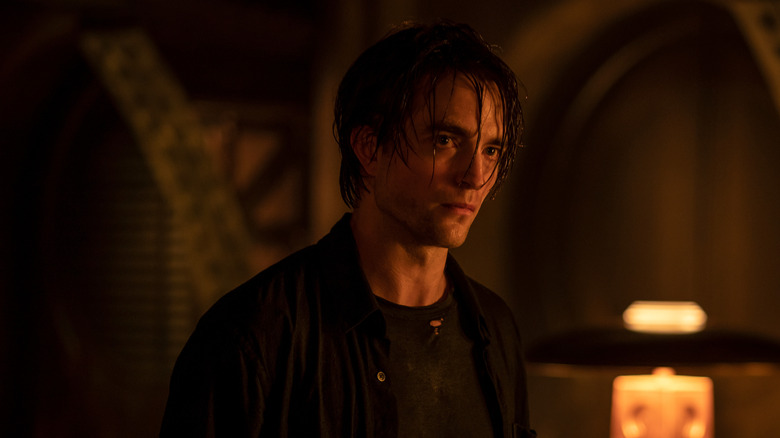
There be spoilers for "The Batman" ahead. Like any good rogue from Batman's rogues' gallery, I will spare no one. This is the only warning you will get, because I am not Batman.
Whatever you thought of "Joker," it's clear from the crowds cheering Arthur (Joaquin Phoenix) at the end that it sets something up for the future. Whether that means a direct sequel or a sequel set down the road a bit, the message is clear: anyone can become a villain. Anyone can be the next Joker. As Arthur Fleck loses it completely on a late-night show, and people around him on the street yell his name in Joker masks, you can see the formation of future villains being formed.
We see this in "The Batman" as well. After Gotham Mayor Mitchell is murdered by the Riddler with "no more lies" written across the duct tape on his face, people flock to the memorial service with the same words written on signs. They've connected with the bad guy. I will not go into how our world seems to echo that, with people lining up in droves behind real-world villains here. I don't have to. I'm sure it already popped into your head.
Team Batman
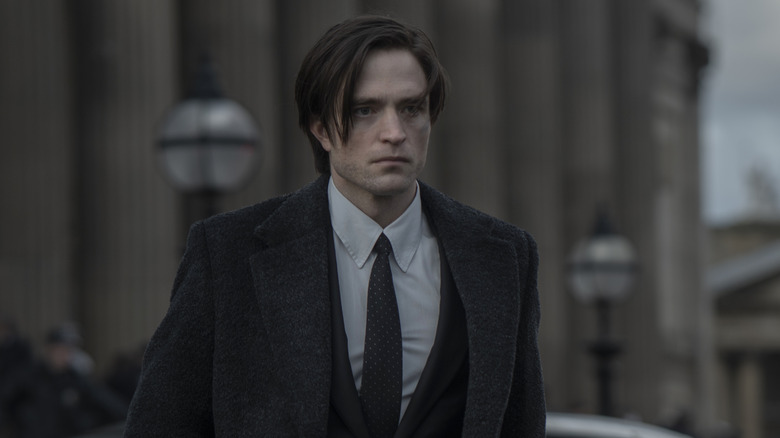
It's very easy to be swayed by people who are in the public eye. We form teams. We take sides. We are Team Edward or Team Jacob. We are Team Riddler or we are Team Batman. We are inspired by people who take action, sometimes even if the action isn't good. We wear Joker shirts, or get tattoos of his face. The disenfranchised and the downtrodden follow the Riddler's every command. We are influenced by what we see.
I was thinking about this while I watched "The Batman" for the second time last night. At the first viewing, I watched the scene with the mayor's shell-shocked son, who discovered his father's body, and my heart broke for that kid. I thought of how Bruce Wayne saw himself in that child. I saw Bruce trying to "save himself" when he pushed the mayor's son out of the way of the car running into the church at the memorial. I got the parallel storyline.
The second time, though, I thought of "Joker." I watched those people cheering for a murderer with their signs and their chants, and I thought about how celebrities influence us and who our role models are. The Batman doesn't kill. That's one of his rules (that he's stuck with to varying degrees over the years). I thought of that kid again, who sees this superhero and whose life is changed by him.
Could The Mayor's Son Become A Hero?
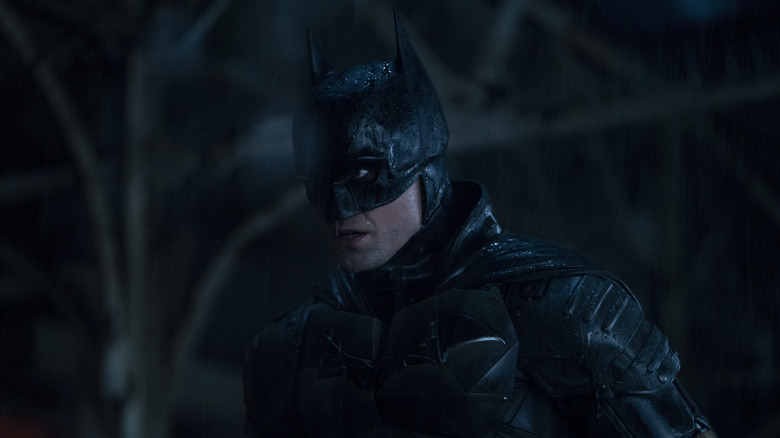
It made me wonder if this kid, this child who suffered in the same way as Batman did, would take up the mantle one day. To be clear, I'm not saying that director Matt Reeves set this up to frame a sequel, or that we're laying the groundwork for a spinoff or something along those lines. I'm saying that this is what it feels like to me — and that there is no reason with the multiple versions of the same heroes or villains that we have in the DCEU, that someone couldn't connect it, even loosely, down the line.
Actor Archie Barnes is listed on IMDB as only "Mitchell's son," and leaving him unnamed might open him up to some super possibilities. He could change his last name to no longer be associated with his corrupt father. He could become, if not the Batman, a Batman. He could become a Robin.
Taking Inspiration From Tragedy
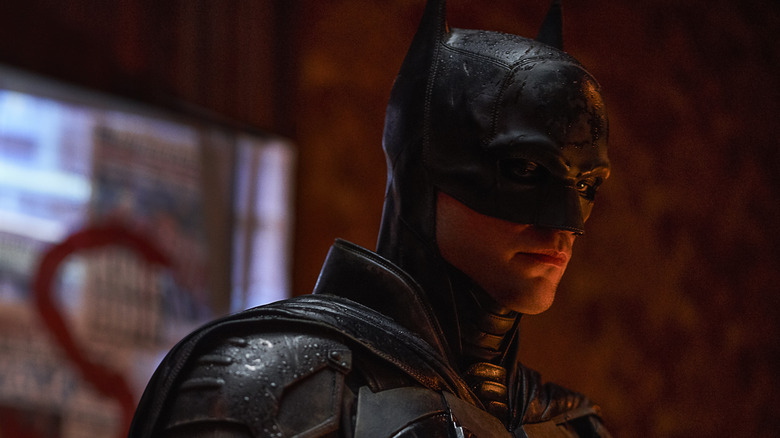
Could he also become a villain? Sure, but here's why I don't think that's going to happen. Bruce Wayne's arc in "The Batman" takes him from hurting bad guys with the hopes of bringing himself comfort, to trying to bring hope to a broken city.
This child watches a man in a bat suit who merely stares at him while he's hurting — he sees a "hero" working on a crime rather than giving him a hug, as I'm sure all the heroes around little Bruce did back then. Stories were written about what a poor little boy Bruce was (leading a young Riddler to resent the hell out of him), and lots of people spoke out, but who really helped this kid? This is where the young Mitchell boy could have gone.
Later though, Bruce pulls the boy out of the way of a speeding car. (My one quibble with "The Batman" is that it wouldn't really be hard to figure out who Batman is if we have technology like the kind of facial recognition software in the film.) If the kid finds out that this is Batman in his "normal person" disguise, that's going to change his perception of heroism.
The Hero We Need
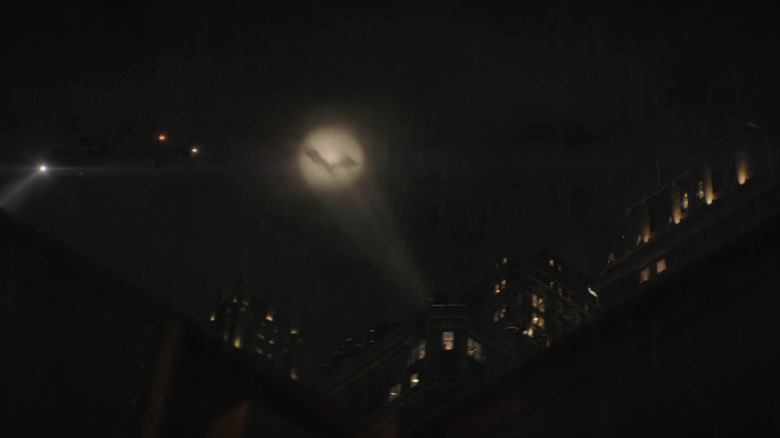
More importantly, the end of Batman's arc has him pull people out of the flood to safety — including this kid — instead of punching bad guys. The child now sees a man who has given up his need for revenge, and is there to save the city as well as he can. That is going to inspire someone who has been through trauma. (I would argue that seeing the new Mayor Bella Reál get up and push on after being shot could do the same.)
This wasn't an origin story for Pattinson's Batman, of course, but maybe it's a roundabout origin story for a new Batman, or a Robin, or another superhero down the line. A traumatic event can give you PTSD, but it can also cause posttraumatic growth. Dr. Travis Langley, in his book "Batman and Psychology: A Dark and Stormy Knight," explains, "People who report posttraumatic growth (positive changes resulting from trauma) experience less depression and greater life satisfaction not by forgetting about the trauma but instead by dwelling on it in constructive ways." (Note: I was one of the proofreaders for the book.)
I don't know if the young Master Mitchell will become the new Batman someday, but I like to think that he will. I like to think that watching someone do the right thing will inspire him to use the tragedy of his father's death (and his life) and become a better person for it. In my heart, this kid is the next Batman. Someday he'll fight a future Joker or a future Riddler. Someday he'll pull another kid out of a flood, or save their life. Hey, a girl can dream.
Read this next: Batman Movies Ranked From Worst To Best
The post How The Batman Redefines Bruce Wayne's Heroism For a New Generation appeared first on /Film.
0 Comments